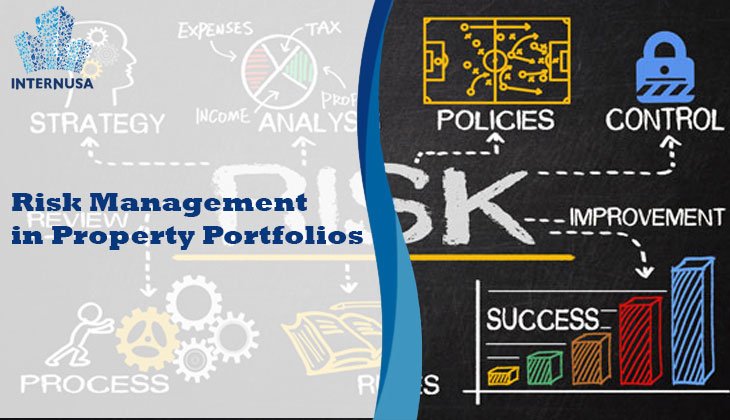Risk Management in Property Portfolios
Investing in property portfolios can be highly rewarding, offering stable returns, long-term appreciation, and diversification. However, just like any other investment, it comes with risks. From market volatility to tenant defaults, poor property maintenance to regulatory changes — each factor can impact returns. That’s why effective risk management in property portfolios is essential for long-term success.
This article explains the key risks in property portfolios, strategies to mitigate them, and how investors can protect and grow their real estate assets sustainably.
What Is Property Portfolio Risk Management?
Risk management in property portfolios refers to the identification, assessment, and mitigation of potential threats that may affect the performance or value of real estate investments. A well-managed portfolio balances risks and rewards while aligning with the investor’s financial goals.
Risk management helps property investors:
-
Minimize losses
-
Maintain steady cash flow
-
Optimize asset value
-
Navigate market uncertainties
Types of Risks in Property Portfolios
1. Market Risk
Property values and rental demand are subject to economic cycles. Recessions, interest rate hikes, and oversupply can reduce occupancy rates and lower prices.
2. Tenant Risk
Unreliable tenants can lead to rent defaults, legal disputes, and unexpected vacancies — all of which affect income flow.
3. Location Risk
Investing in areas with declining demand, poor infrastructure, or low employment can limit rental potential and capital growth.
4. Operational Risk
Poor property management, delayed maintenance, and compliance failures can reduce property value and tenant satisfaction.
5. Liquidity Risk
Real estate is not a highly liquid asset. Selling a property quickly without significant losses can be difficult during downturns.
6. Regulatory and Legal Risk
Changes in zoning laws, tax codes, or landlord-tenant regulations can impact profitability and require adjustments in strategy.
7. Environmental Risk
Properties in areas prone to floods, earthquakes, or climate-related issues can suffer physical damage or face insurance challenges.
Strategies for Effective Risk Management
1. Diversification
Just like in stock portfolios, diversification is key. Spread investments across:
-
Property types (residential, commercial, industrial)
-
Geographic locations
-
Tenant types (retail, corporate, residential)
This reduces the chance that one market event will impact the entire portfolio.
2. Due Diligence
Always conduct thorough market research and property inspections. Assess:
-
Rental yield trends
-
Vacancy rates
-
Growth projections
-
Neighborhood development plans
3. Tenant Screening and Lease Management
Vet tenants with care:
-
Check credit history
-
Verify employment
-
Review rental background
Also, use well-drafted lease agreements that include provisions for deposit, eviction, maintenance responsibilities, and rent increases.
4. Insurance Coverage
Protect properties with comprehensive insurance:
-
Property damage
-
Loss of rent
-
Liability insurance
-
Natural disaster protection (as applicable)
Review and update policies regularly to reflect changing risks.
5. Regular Maintenance and Upgrades
Keep properties in top condition through preventive maintenance. Upgrades can increase rental appeal and justify higher rent.
6. Build an Emergency Fund
Set aside a percentage of rental income for unexpected expenses — such as repairs, vacancies, or legal issues. A typical rule is to reserve 5–10% of gross rental income annually.
7. Leverage Wisely
While borrowing can amplify returns, excessive leverage increases financial risk. Aim for a balanced loan-to-value (LTV) ratio and ensure you can cover repayments even during low-rent periods.
8. Monitor Legal and Market Changes
Stay informed about:
-
Local property regulations
-
Tax changes
-
Interest rates
-
Urban development policies
Being proactive allows you to adapt faster to changes.
The Role of Technology in Property Risk Management
Today’s property investors can use technology to track risks more effectively:
-
Property management software helps monitor income, expenses, and maintenance.
-
Data analytics tools provide market insights and forecasting.
-
Tenant portals improve communication and payment tracking.
-
Digital dashboards help visualize performance and potential red flags.
Automation and data-driven decision-making reduce human error and increase operational efficiency.
Case Example
Let’s say an investor owns a portfolio of residential units in one metropolitan area. When the local economy slows down, tenant turnover increases, rental income drops, and maintenance issues become harder to manage.
If the investor had:
-
Diversified into other cities,
-
Screened tenants more rigorously,
-
Created a reserve fund,
-
Used digital tools for monitoring…
…they would have mitigated these issues much faster and with less financial impact.
Benefits of Proactive Risk Management
-
Improved cash flow stability
-
Higher occupancy rates
-
Reduced legal and compliance issues
-
Increased asset value over time
-
Greater peace of mind for investors
Being reactive can cost more than being prepared. Risk management isn’t just about avoiding loss — it’s also about positioning your portfolio for long-term growth.
Q&A: Risk Management in Property Portfolios
Q1: What is the biggest risk in a property portfolio?
A: Market risk and tenant risk are among the most significant. Economic downturns and unreliable tenants can heavily impact income.
Q2: How can I protect my property portfolio from a real estate crash?
A: Diversify your investments, avoid overleveraging, and maintain healthy cash reserves. Also, focus on quality locations with long-term demand.
Q3: Should small investors worry about risk management too?
A: Absolutely. Whether you own one unit or fifty, risk management protects your income and assets from unexpected shocks.
Q4: What tools can help with property risk management?
A: Property management platforms (like Buildium or Propertyware), rental analysis software (like Mashvisor), and dashboards for financial tracking.
Q5: How often should I review my risk management strategy?
A: At least annually, or whenever there are changes in the market, regulations, or your financial goals.
Risk management in property portfolios is not optional — it’s an essential component of a successful investment strategy. With the right planning, tools, and awareness, you can protect your properties, minimize losses, and achieve long-term growth.
Don’t wait for a problem to arise. The best time to manage risk is before it happens.







